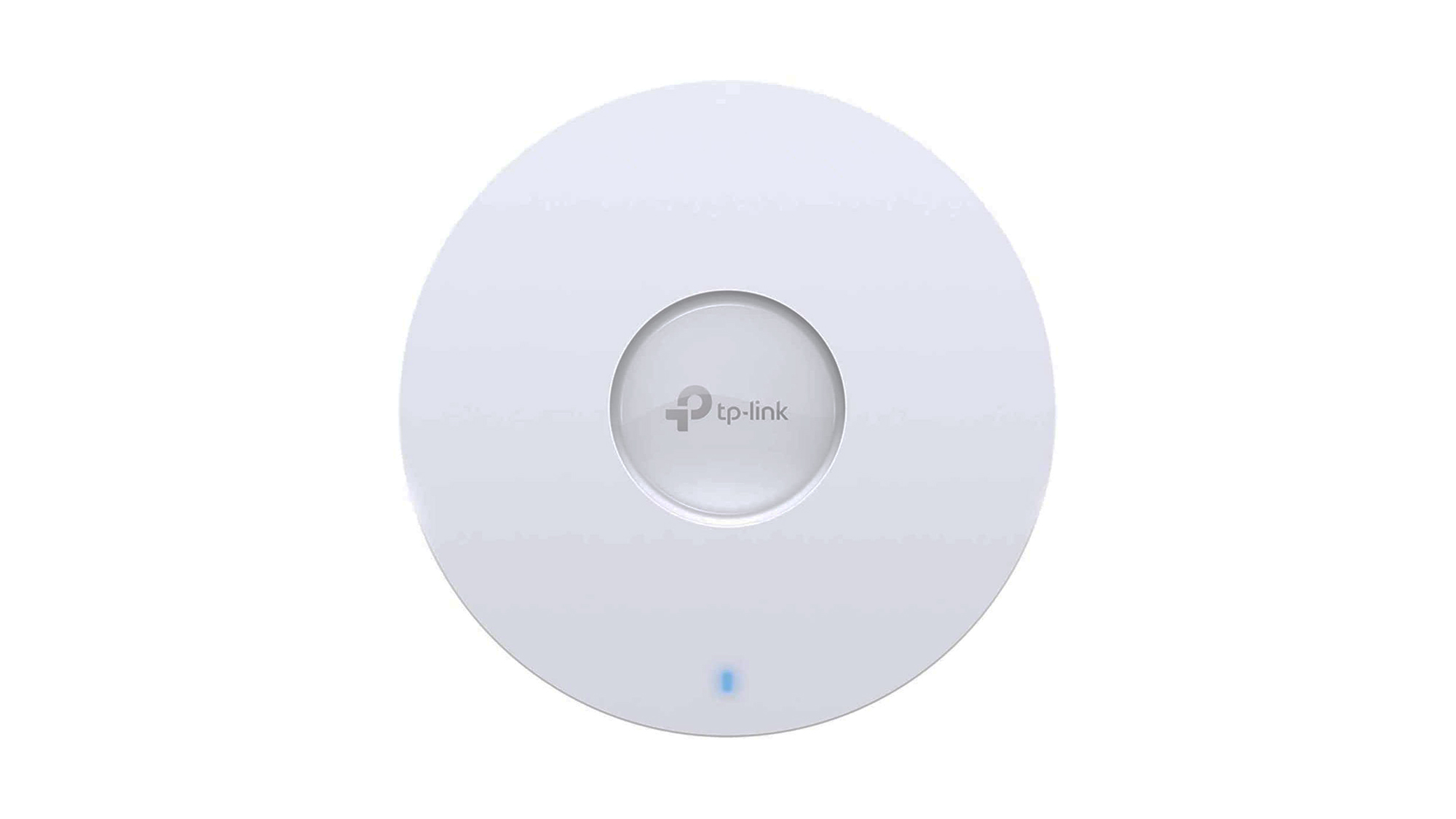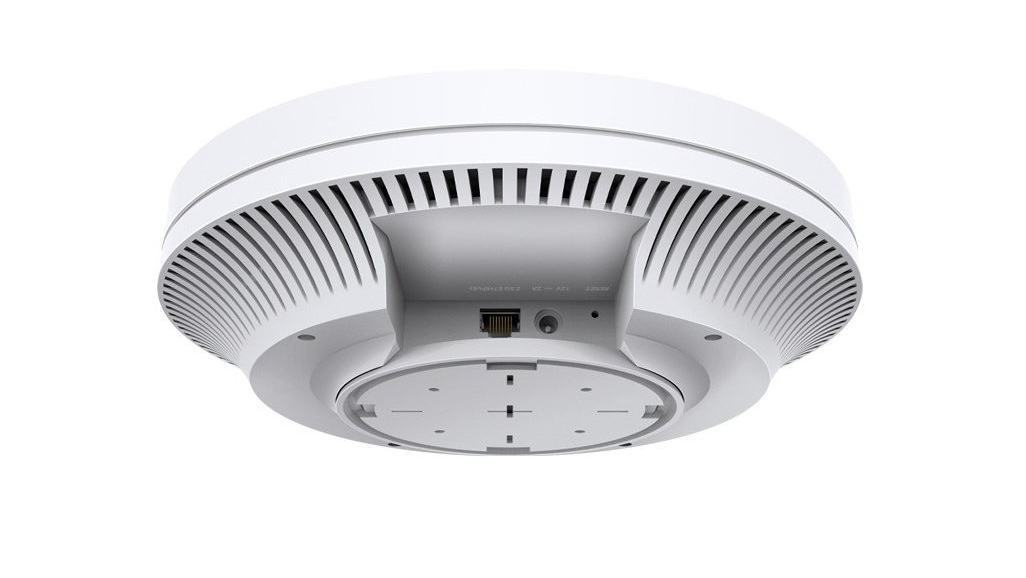TP-Link Omada EAP620 HD review: No speed demon
A low-cost business Wi-Fi 6 AP with classy cloud management and acceptable performance

-
+
Robust cloud-based management options
-
+
Affordable
-
+
Strong feature-set
-
-
Not as fast as AX3600 APs

SMBs wanting to upgrade to Wi-Fi 6 on a tight budget will find plenty to like about TP-Link’s Omada EAP620 HD. For a modest outlay of £136, this dual-band access point delivers a full set of business features, including the same cloud management services as found on much pricier models.
As you’d expect at this price, it’s not the fastest performer. It carries an AX1800 rating, made up of 1,201Mbits/sec on its 5GHz radio and 574Mbits/sec on the 2.4GHz band. These are theoretical maximums, but there’s still a definite performance gap between this and an AX3600-rated AP like Netgear’s WAX620. When copying large files between a Windows 10 Pro workstation sporting a TP-Link Archer TX3000E Wi-Fi 6 PCI-E adapter and a server on our 10GbE LAN, we saw average transfer speeds of 87MB/sec at close range, which is 32% slower than we’ve previously seen from TP-Link’s AX3600-rated EAP660 HD. Moving the EAP620 HD to a distance of ten metres away saw our test speeds fall to 68MB/sec, 41% slower than the AX3600 model.
While the EAP620 HD may not be a speed demon, it offers plenty of features and two management choices. In standalone mode, its web console presents a quick-start wizard that requires you to create a new administrative user and password, sensibly removes the default admin account and guides you through the creation of your first two secure wireless networks.
Up to eight SSIDs can be assigned on each radio, and for strong security you can apply mixed-mode WPA3/WPA2 encryption to each one. Custom rate limits can be assigned to specific SSIDs, load balancing allows you to restrict the number of clients that can associate with the AP, and enabling the guest network option ensures that wireless users can’t access systems on the LAN.
For multi-AP deployments, it makes sense to use TP-Link’s Omada cloud management platform. For this, each site requires a TP-Link controller, which connects to your cloud portal account. TP-Link provides free controller software for Windows and Linux, but for testing we used the dedicated OC300 hardware appliance, which costs around £110.

To take advantage of the full set of cloud features, we connected the EAP620 HD to a TP-Link TL-R605 broadband router, and powered it from a TL-SG3210XHP-M2 PoE+ multi-Gigabit switch. This may sound like a lot of extra expense, but the router only costs £39, while the switch is a very reasonable £262, and using the two together means you can manage your entire network from one cloud portal.
After we’d powered up the EAP620 HD, it popped up in the cloud console as “pending”; once adopted, it promptly pulled in all wireless settings from the controller and started broadcasting our defined SSIDs. Cloud configuration supports the same eight SSIDs as standalone mode, with all the same features such as mixed WPA3/WPA2 encryption, rate limits and load balancing.
The cloud portal is a fine-looking affair, with a customisable dashboard that reveals everything you need to know about your network, such as wireless summaries, client distribution, most active clients and wireless traffic. Select a switch, router or AP and a panel pops up on the right with options to view all its details, remotely configure it and upgrade its firmware.
Cloud management also opens up more captive portal features than standalone mode. You can require authentication via password, local user, voucher, RADIUS or Facebook, customise your portal with pictures and branding logos, publish acceptable-use policies and create portals for workstations and mobiles.
The EAP620 HD clearly isn’t aimed at SMBs that want top Wi-Fi 6 performance and coverage, but it scores well for its competitive price. It offers plenty of business-class features, with TP-Link’s software and hardware controllers providing top-notch network management.
TP-Link Omada EAP620 HD specifications
| Band support | AX1800 dual-band 2.4GHz/5GHz 802.11ax |
| Radios | Internal aerials |
| Ports | Gigabit LAN/802.3at PoE+ |
| Additional features | Ceiling/wall mounting kits, external PSU included |
| Dimensions (WDH) | 243 x 243 x 64mm |
| Weight | 680g |
Get the ITPro daily newsletter
Sign up today and you will receive a free copy of our Future Focus 2025 report - the leading guidance on AI, cybersecurity and other IT challenges as per 700+ senior executives
Dave is an IT consultant and freelance journalist specialising in hands-on reviews of computer networking products covering all market sectors from small businesses to enterprises. Founder of Binary Testing Ltd – the UK’s premier independent network testing laboratory - Dave has over 45 years of experience in the IT industry.
Dave has produced many thousands of in-depth business networking product reviews from his lab which have been reproduced globally. Writing for ITPro and its sister title, PC Pro, he covers all areas of business IT infrastructure, including servers, storage, network security, data protection, cloud, infrastructure and services.
-
 ‘Phishing kits are a force multiplier': Cheap cyber crime kits can be bought on the dark web for less than $25 – and experts warn it’s lowering the barrier of entry for amateur hackers
‘Phishing kits are a force multiplier': Cheap cyber crime kits can be bought on the dark web for less than $25 – and experts warn it’s lowering the barrier of entry for amateur hackersNews Research from NordVPN shows phishing kits are now widely available on the dark web and via messaging apps like Telegram, and are often selling for less than $25.
By Emma Woollacott Published
-
 Redis unveils new tools for developers working on AI applications
Redis unveils new tools for developers working on AI applicationsNews Redis has announced new tools aimed at making it easier for AI developers to build applications and optimize large language model (LLM) outputs.
By Ross Kelly Published
-
 Google layoffs continue with "hundreds" cut from Chrome, Android, and Pixel teams
Google layoffs continue with "hundreds" cut from Chrome, Android, and Pixel teamsNews The tech giant's efficiency drive enters a third year with devices teams the latest target
By Bobby Hellard Published